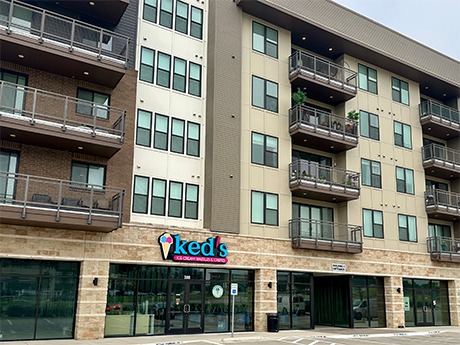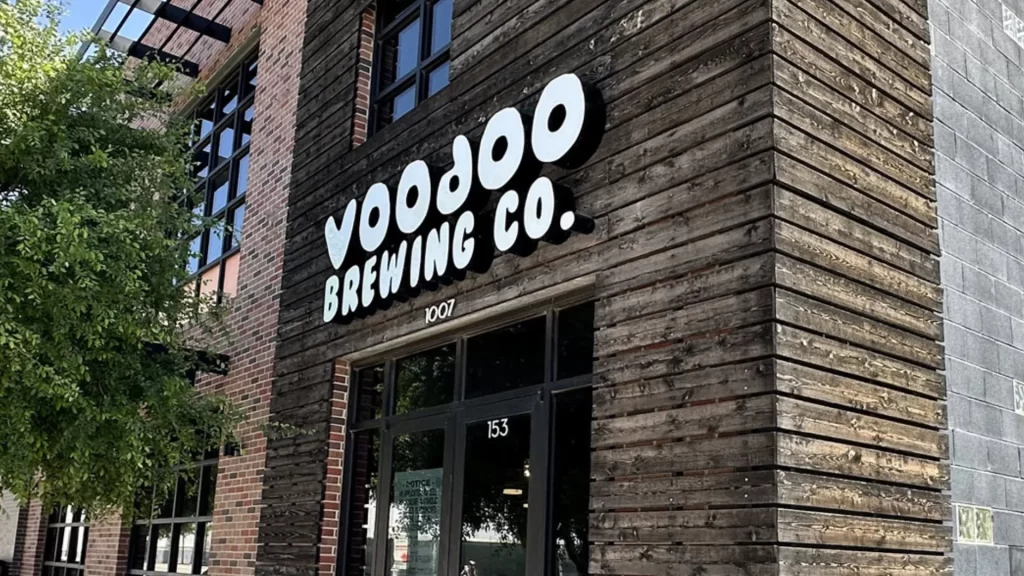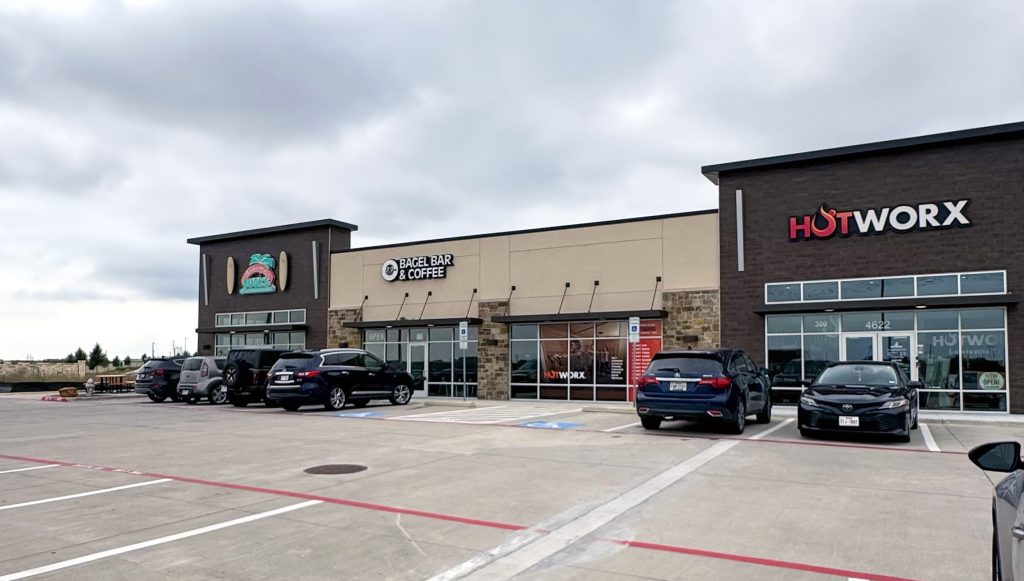
CATEGORY
TAGS
SHARE
Retail Market Conditions Favor Household Names
Everybody loves a good underdog success story, but sometimes the Goliaths of the world just have too much going for them to get beat by the Davids.
All retail owners worth their salt recognize the unique draws that boutique, original concepts bring to their shopping centers. But landlords’ fiduciary responsibilities often dictate that they bring in heavier proportions of national credit tenants that can afford top-dollar rents — all other factors being held equal. And in a market defined by (relatively) high costs of capital, low vacancy, healthy demand for space and rising operating expenses, established brands have the edge.
“The market definitely favors national credit tenants that are well-financed and have hundreds if not thousands of locations,” says Will Majors, senior vice president in CBRE’s Austin market. “At minimum, it favors franchised locations with national corporate offices that support the franchisees.”
According to data from CBRE, the direct availability rate for retail space in Dallas (not the metroplex as a whole) stood at 4.8 percent at the end of the first quarter, essentially unchanged from a year ago. In Austin, the availability rate currently clocks in at 3.4 percent, just 10 basis points higher on a year-over-year basis. Asking rents for retail space in Dallas and Austin increased 2 percent and 1.1 percent, respectively, during that 12-month stretch. Houston remains slightly more navigable at 5.4 percent availability and 1.8 percent year-over-year growth in asking rents.
Considering that all three of those cities cracked the Top 10 for volume of new deliveries of retail space in the first quarter, according to CBRE, this data is even more remarkable in terms of showcasing healthy demand.
Landlords need those higher rents to offset increases in ancillary costs such as insurance, debt service and tenant improvement (TI) allowances.
Matt Knagg, advisor at brokerage firm SVN/J. Beard Real Estate — Greater Houston, notes that in addition to their deeper pockets, landlords like the corporate guarantees that often accompany leases with national retailers. These users also have more physical units over which to allocate risk.
“Because the [corporate] entity guaranteeing the lease is stronger, the risk from the landlord’s perspective is generally much lower,” he says. “National credit tenants have significant operational experience and efficiencies as well as numerous stores that can float their total revenue. So if you have multiple stores with corporate-guaranteed leases, if one location is struggling, the others could cover the rent. This keeps owners and their partners satisfied, as well as their lenders.”
How We Got Here
Trends in brick-and-mortar real estate often seem to unfold and become entrenched — and subsequently uprooted — with blistering speed. The dynamic of national credit tenants gaining the upper hand on their mom-and-pop counterparts is no exception, as it was just a few years ago that the opposite was largely true.
Under siege from an exploding e-commerce movement, retail owners in the years leading up to the pandemic sought and courted the quirky, unique tenants that nobody else had, eager to avoid the perception that their centers were cookie-cutter properties. New concepts, particularly within internet-resistant categories like food, fitness and entertainment, began to proliferate, much to the delight of consumers and landlords lucky enough to land them.
Then COVID-19 happened. And while the initial fallout from the pandemic involved more pain for brick-and-mortar retail, the ensuing inflation and interest rate hikes set the table for the paradigm shift in retail leasing philosophy that is now taking root.
“Coming out of COVID, sensitivity of tenant credit profiles was heightened,” says Knagg. “Landlords increasingly had to consider if tenants could sustain economic downturns and competition from online sales competitors when underwriting deals. Experiential retail concepts also emerged as a result of the pandemic. The reality is national groups tend to have more bandwidth for marketing and research to continuously refine how to operate a store versus somebody starting out for the first time.”
To their credit, however, retail owners and operators alike learned good lessons from all the disruptive events. Perhaps the most important of those lessons is the fact that brick-and-mortar stores and online sales platforms can not only coexist, but elevate one another.
“Retailers have had to figure out how to have a blend of brick-and-mortar and e-commerce [platforms], and many have now gotten it right and successfully developed multiple channels of distribution,” says Daniel Taylor, executive managing director and Texas market leader at Colliers. “It’s no longer just a matter of having a 30,000-square-foot storefront for selling a certain product, because many products can now be purchased in different places.”
It’s no coincidence that the golden age of mom-and-pops overlapped with the era of cheap money, says Majors.
“Five to 10 years ago, when you had more mom-and-pop tenants going into centers, they could borrow money for their build-outs at much lower rates,” says Majors. “As interest rates have risen, there’s been a flight to national credit tenants that have large bankrolls and can pay cash for build-outs to open their stores.”
Allowances for build-outs have indeed become bigger sticking points in retail and restaurant lease negotiations in recent years. Again, the pandemic bears the brunt of the blame for this dynamic, as disruptions in global supply chain activity added significant time and cost pressures to materials and services needed to make those projects happen. Tenants responded by asking landlords to pony up heftier TI packages.
“With tenants paying more rent, TI numbers have grown significantly,” says Majors. “If you have shell space or new construction, those TI amounts have gone from $40 to $50 per square foot to an average of about $70 per square foot [over the past 18 months or so]. For restaurants, it’s probably more like $100 to $120 per square foot to make those deals work. But demand for space is there, and national and regional tenants are both vying for it.”
Knagg says that landlords have shown some willingness to grant higher TI allowances to well-established credit tenants. By the same logic, when it comes to deals with smaller tenants that are startups, TI dollars can often be the element of the lease negotiations that sinks the deal. Once again, this pattern is a reflection of broader macroeconomic conditions within commercial real estate.
“Owners are typically more willing to give out higher TI packages in exchange for higher rent for credit tenants, knowing that there’s less risk of that tenant going out of business,” he says. “Interest rate hikes also factor in pretty heavily in terms of smaller tenants not being able to finance build-outs. That’s why build-out costs have been the biggest deal killers of late, both with regard to what landlords have to provide in TI allowances, but even more so in terms of what the remaining balance is that the tenant has to cover.”
Guaranteed Success
It’s no surprise that in an inflationary environment, TI allowances can often be thorny elements of lease negotiations. But as the costs of running a retail or restaurant operation has increased alongside rising rents, landlords have begun seeking more guarantees on their leases, whether personal or corporate.
Sources say this has become a serious point of contention in dealmaking.
“Tenants are paying more attention to items like limiting their guarantee or inserting COVID language that covers closures due to pandemic-like events,” says Majors. “So there are some new battles that are being fought with tenants that five years ago weren’t such a big deal. Tenants are trying to be more cautious in their Armageddon scenarios if they have to get out, so limited guarantees is a big one.”
Knagg notes that the inability of some mom-and-pop tenants to provide personal guarantees is yet another factor that plays to the advantage of national tenants in these scenarios.
“There’s room in the market for mom-and-pop and startups, but you have to have strong personal guarantors on the lease, strong business plans and something that’s a new and exciting concept and already has a following,” he says.
“Those opportunities are there, but they’re tough, and most landlords are going to side with national credit tenants for higher rent and better guarantees on the lease if they have the option,” Knagg continues. “Landlords would rather assure their investors that they have a 10 or 15-year lease with a corporate guarantee that they likely won’t have to think about until renewal comes up.”
Nathaliah Naipaul, CEO and partner at XAG Group, a retail development and brokerage firm based in the Houston area, says that a smaller tenant’s unwillingness to personally guarantee a lease is a dealbreaker. However, as an experienced landlord, this can be a teaching moment with an inexperienced tenant.
“Personal guarantees are a big one that we go back and forth on; nobody wants to personally guarantee a lease because they’re scared, especially if it’s a first-time business owner,” she says. “We work to comfort and explain the underwriting process and importance of financial stability needed to support a business. Sometimes, we may have to tell a tenant they’re not ready to open a store.”
While the company would undoubtedly prefer to maximize occupancy and cash flow in the short run, Naipaul says it’s not worth the risk if the underwriting doesn’t make sense based on the standards of the company, which takes pride in not having a high rate of tenant turnover.
“We don’t ‘use’ tenants just to build-out or fill a space — we’re known for not being that type of landlord,” she explains. “With that said, we want a tenant to succeed, and we can look at options of a one-year rolling guarantee after the first five-year term.”
It’s Not Absolute
Despite national credit tenants currently having some advantages over mom-and-pop retailers, owners readily acknowledge just how crucial original, startup concepts are to creating identities within shopping centers.
“There’s always going to be a place in real estate for smaller, local shops; we’re just seeing, in brokerage specifically, a move away from local market delivery to more of a regional or national scope. That’s because brokers previously relied on a local model, whereas now brokers need a larger platform to service their client’s needs,” says Taylor of Colliers. “We’re in the relationship business, and we have to trust a tenant before we do business with them, whether they’re small or national. But in order to sell bigger business these days, you’ve got to be a brand name, because those groups create a sense of comfort.”
No two centers are identical, and key leasing decisions must ultimately be driven by the surrounding market’s needs.
Ipso facto, owners of centers in more affluent locations can be a little choosier with regard to curating tenant mixes, including gambling on a lesser-known, yet innovative startup concept over a proven one.
“We really like local tenants if they’re creditworthy because those local regional tenants contribute to the personality of your center, and you have to make [leasing] decisions based on what’s best for your center, including taking flyers on some smaller tenants,” says Ward Kampf, president of Dallas-based owner-operator Northwood Retail. “But it’s gotten trickier in recent months as retailers and landlords have all faced higher costs of capital.”
Some of Northwood’s recent leasing activity exemplifies this push-and-pull dynamic. Last fall, the company welcomed three new tenants to its Hillside Village shopping center in northeast Dallas. JuiceLand is a regional tenant that has only been around about a dozen years but has grown to over 40 locations in Texas. Los Angeles-based veterinary clinic Modern Animal also operates on a regional basis but continues to target new openings in Texas.
The third tenant, cosmetics retailer Sephora, is a global brand with more than 2,500 stores across 35 countries, many of which are in Kohls stores. And prior to those deals being inked, Northwood brought in Phoenix-based Sprouts Farmers Market, one of the fastest-growing grocers of the last decade, as a new anchor tenant at Hillside Village.
Kampf offers insight on the strategy behind the deals with the national users.
“Sephora is a tenant you’d typically find in a [Class] A mall or center, and Sprouts tends to be in wealthy neighborhoods that can support specialty grocers,” he says. “When you have that kind of credit and are such a strong player, it allows you to keep growing. And if you’re looking for growth, those stronger retailers can lower [your] cost of capital, and those that generate high margins tend to win out. That’s kind of what we’re seeing play out.”
Role of the Franchise
Britton Lankford, development manager at metro-Dallas-based owner Bright Realty, says that he is seeing more franchised concepts circling his market and looking to take advantage of macroeconomic conditions. Bright Realty is perhaps best known for The Realm at Castle Hills, its flagship mixed-use development in the northern Dallas suburb of Lewisville.
“There are a lot of franchise operators coming in because they see a demographic that makes sense to them,” Lankford says. “Inflation is a factor and can be a hindrance for tenants that don’t have big-picture plans or precise expectations for sales, margins and costs of occupancy.”
Lankford adds that against that backdrop, Bright Realty is constantly learning about new concepts and different dynamics that are trying to capture the hearts and wallets of younger consumers. In terms of specific categories, he says that ethnic grocers are making aggressive pushes in his market, as are restaurants of both the national and local variety.
“Back in the day, your grocery anchors and good small shops primarily drove traffic, but restaurants have now really started to take the lead,” he says. “We’ve got some new boutique operators coming in too in the clothing and jewelry spaces that make for a more complete shopping and dining experience.”
Bright Realty recently announced that nearly a dozen food-and-beverage concepts have either signed leases or opened restaurants at The Realm at Castle Hills. Unsurprisingly, the lineup features a mix of profiles, including:
• Marble Slab Creamery/Great American Cookies (1,600 square feet);
• Indo-Chinese restaurant The Monk’s (3,869 square feet);
• RT Bakery (1,507 square feet);
• Voodoo Brewing Co. (4,346 square feet);
• Bagel Bar (1,186 square feet);
• Ked’s Artisan Ice Cream & Treats (1,893 square feet);
• Cocinero Mexican Restaurant (3,800 square feet);
• Bluebonnet Brunch House (2,479 square feet);
• Tifa Gelato & Chocolate (1,390 square feet); and
• Pizza Twist (1,115 square feet)
Multiple sources interviewed for this story also said that they are seeing some retailers occupy a sort of gray area between true mom-and-pop status and franchised operations. They are expanding and standardizing their real estate footprints and business plans as per the franchise model, but not actually formally franchising their concepts.
“Some of the mom-and-pop tenants have sort of become first-time franchisees,” says Lankford. “We have some groups that are sitting on capital and want to diversify their businesses but need a plan that makes sense for them. The franchise-driven model has those parameters in place for new operators that have less experience.”
Naipaul of XAG Group sees operators in certain categories taking similar steps in her market.
“We’re seeing more franchise concepts like restaurants, fitness or coffeeshops coming in, and we still have donut shops, nail salons, sushi restaurants and other food concepts, just to name a few that are growing independently,” Naipaul says. “They have a franchise model but retain a mom-and-pop essence. This allows them to leverage economies of scale, compete on cost and have higher margins.”
This dynamic attests to the ability of mom-and-pop users to recognize some of the disadvantages they face and adapt
accordingly.
Taylor Williams, REBusiness Online
— This article originally appeared in the May 2024 issue of Texas Real Estate Business magazine.











